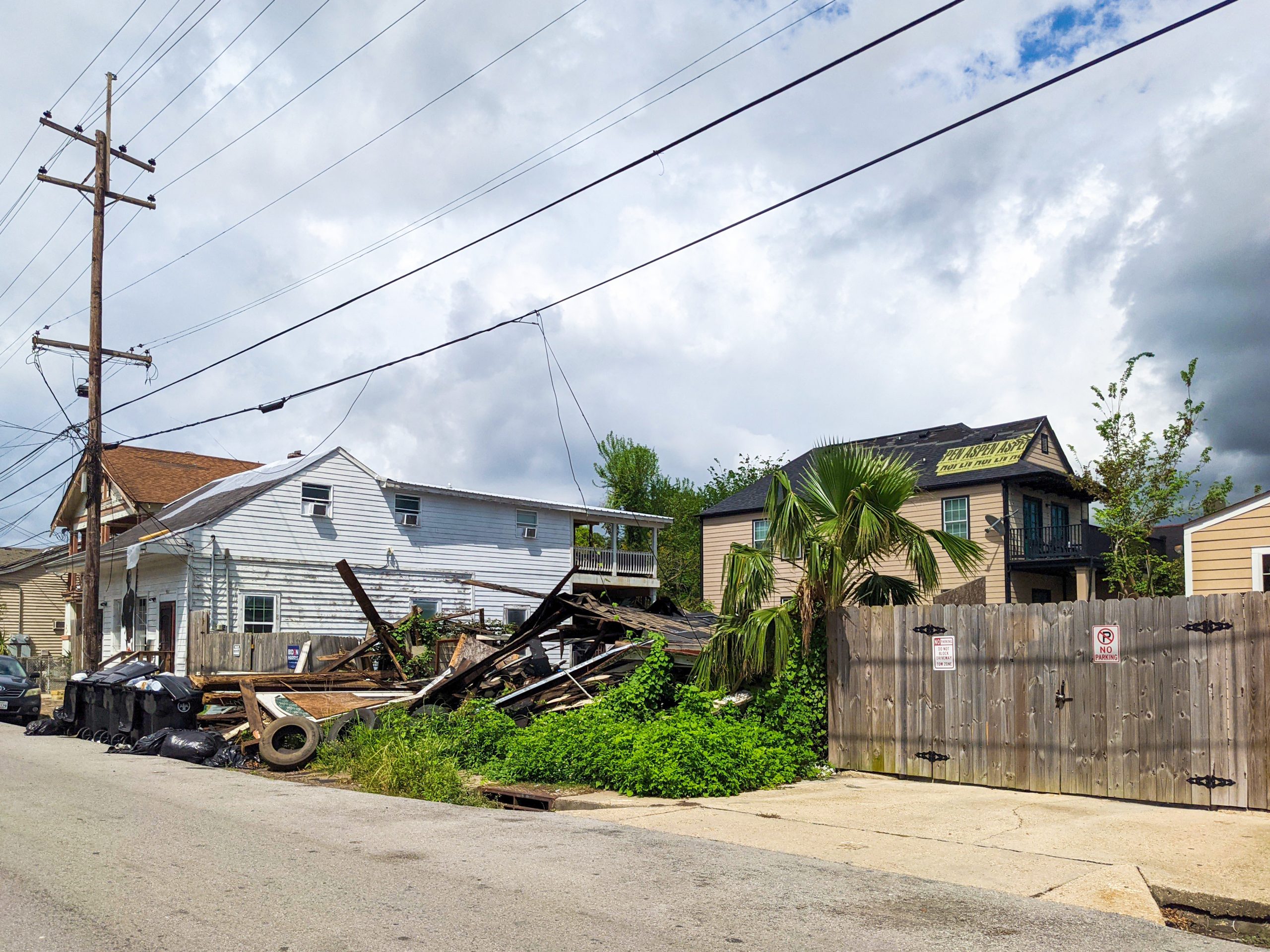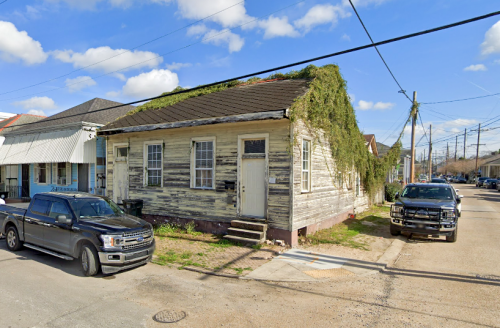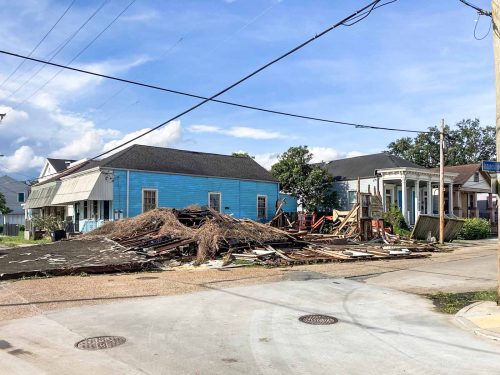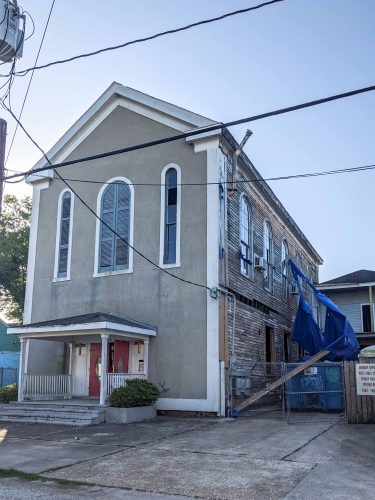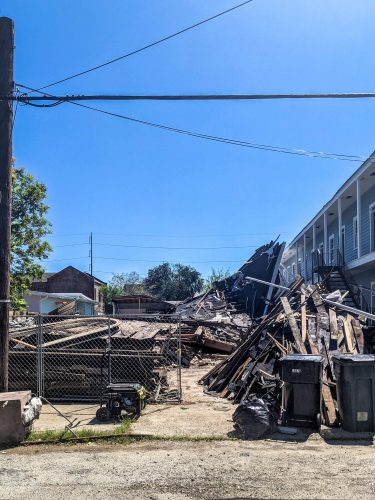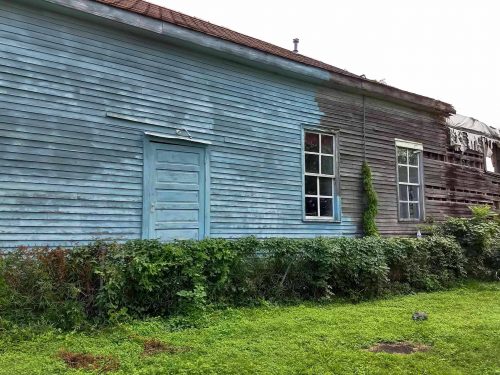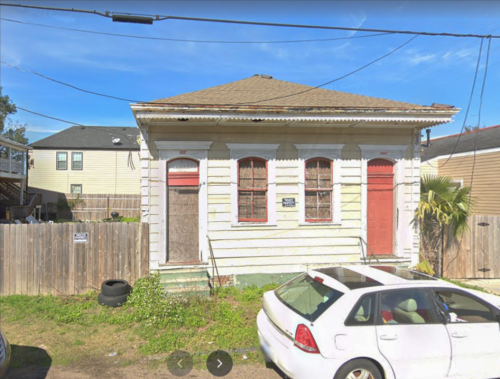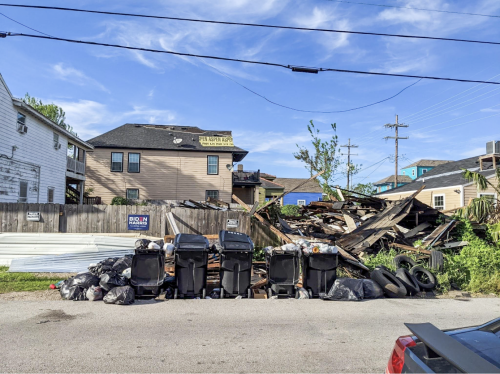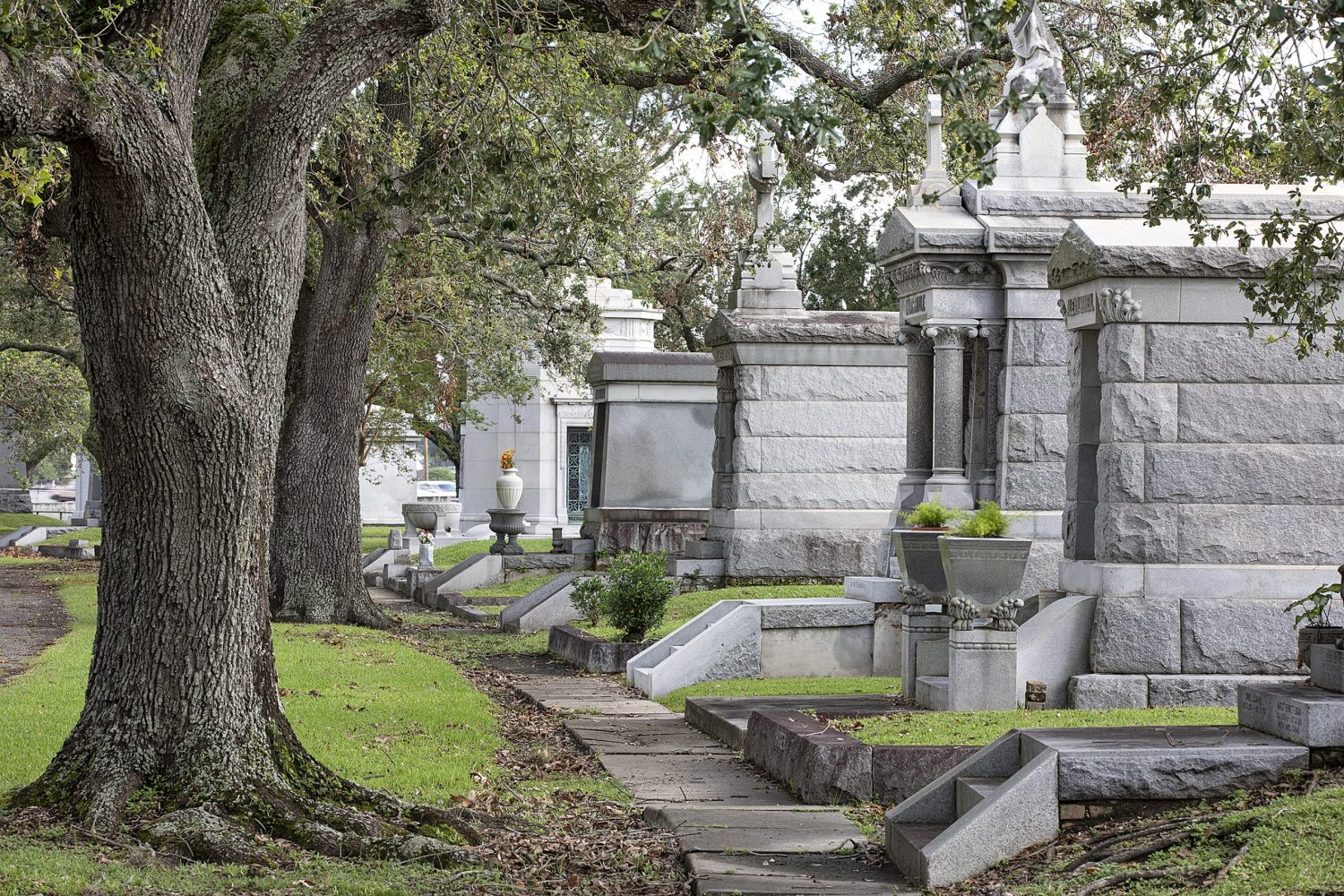This story appeared in the October issue of PRC’s Preservation in Print magazine. Interested in getting more preservation stories like this delivered to your door nine times a year? Become a member of the PRC for a subscription!
In Armstrong Park, the Kitchen Building, a dependency of Perseverance Masonic Lodge No. 4 — often simply called Perseverance Hall — is best known to many as the home of WWOZ radio station from 1984 to 2005. It was from this “Treehouse Studio” in Tremé that the station grew to become a beloved voice for New Orleans indigenous music and a champion of live performance.
After Hurricane Katrina, the Kitchen Building sat vacant along with the other remaining historic structures within Armstrong Park. Plans to renovate them for the Jazz National Park never materialized, and the Park Service terminated its lease with the city in 2018.
Then, this summer, gusts from Hurricane Ida swept through the building’s broken windows and burst open a wooden second-story wall on the north side of the structure. As of this writing, the city was conducting damage assessments of all public buildings, and the Preservation Resource Center was exploring options to provide immediate stabilization assistance.
Mercifully, the masonry Perseverance Hall — built for a benevolent society comprised largely of immigrants from Santo Domingo (later Haiti) — was found stable, having suffered the loss of windowpanes and shutters.
Before & After
This Creole cottage in the Irish Channel, beset by cat’s claw vine before the storm, collapsed in the winds of Hurricane Ida. (Left: photo from Google maps. Right: photo by Anna Pernas.)
At the downriver edge of the Irish Channel, the Seamen’s Bethel Church was a rare wooden house of worship with a stuccoed facade and arched windows lighting the second-story sanctuary. Constructed in the 1880s, it was undergoing renovation along with a narrow dependency before being felled by Ida. Photos by Nathan Lott.
In collaboration with staff of the Historic District Landmarks Commission, the PRC has cataloged 23 historic buildings in New Orleans that experienced major structural damage during Hurricane Ida. Thirteen of these buildings collapsed completely. The others lost some portion of their walls or experienced a partial roof collapse.
Wooden residences comprise a majority of those structurally damaged, reflecting their predominance among New Orleans historic building stock (seven were shotgun doubles and five were two-story residences). However, masonry structures were not immune.
At least one collapsed home was occupied when it fell, according to reports by WDSU TV. Thankfully, the owner survived unharmed.
Most of the properties to experience major structural storm damage were in some state of vacancy and deterioration, and several were under construction. The removal of windows or weatherboards may have played a role in some cases. High wind events like Hurricane Ida can create differential pressure, meaning winds interact with structures to create both positive pressure and negative pressure (suction).
Before & After
The altered rear of Perseverance Benevolent and Mutual Aid Society Hall (later the Holy Aid and Comfort Spiritual Church), pictured at left in 2018, showed deterioration when it was added to the National Register of Historic Places in 2018. Hurricane Ida further damaged the structure (right). Left: photo from the building’s nomination to the National Register of Historic Places. Right: photo by Nathan Lott.
Also on the 1600 block of N. Villere Street, this shotgun double was one of several to collapse in the storm. It is shown missing a door and windows in a January 2021 image. Left: photo from Google Maps. Right: photo after Hurricane Ida by Nathan Lott.
In the 7th Ward, the Perseverance Benevolent and Mutual Aid Society on North Villere Street — not to be confused with the separate Perseverance Masonic Lodge No. 4 in Armstrong Park — is another music landmark that also witnessed performances by the pioneers of jazz. The single-story meeting hall was built around 1880, and its Spanish Mission Revival parapet added about 1927. That distinct facade remains standing after Hurricane Ida. However, the storm tore off the rear of the building leaving it structurally unsound and its future uncertain.
Sometimes referred to as Perseverance Society Hall, the wooden structure was acquired by Holy and Comfort Spiritual Church in 1949. Because of its significance to New Orleans’ African American community during the era of Jim Crow segregation, and in particular its association with the rise of jazz, the building was listed on the National Register of Historic Places in 2018.
Though Hurricane Ida caused damage across the city, preservationists can be relieved that some well-known-if-not-well-cared-for buildings remain standing. Among them: the former Holy Cross School Administration Building, which lost more of its roof; Plaza Tower, the upper floors of which were recently wrapped in fabric to prevent falling debris; and the former Dan’s Bar in the Marigny, which may have survived the storm because of the emergency stabilization that followed threats of a code enforcement demolition earlier this year.
Hundreds, perhaps thousands, more New Orleans buildings suffered roof damage, broken windows or the loss of gutters or weatherboards. As owners wrangle with insurers and struggle to find contractors, they can take solace in knowing that well-maintained historic buildings across the city proved resilient in the face of Hurricane Ida and will likely do so again.
Nathan Lott is PRC’s Policy Research Director and Advocacy Coordinator.
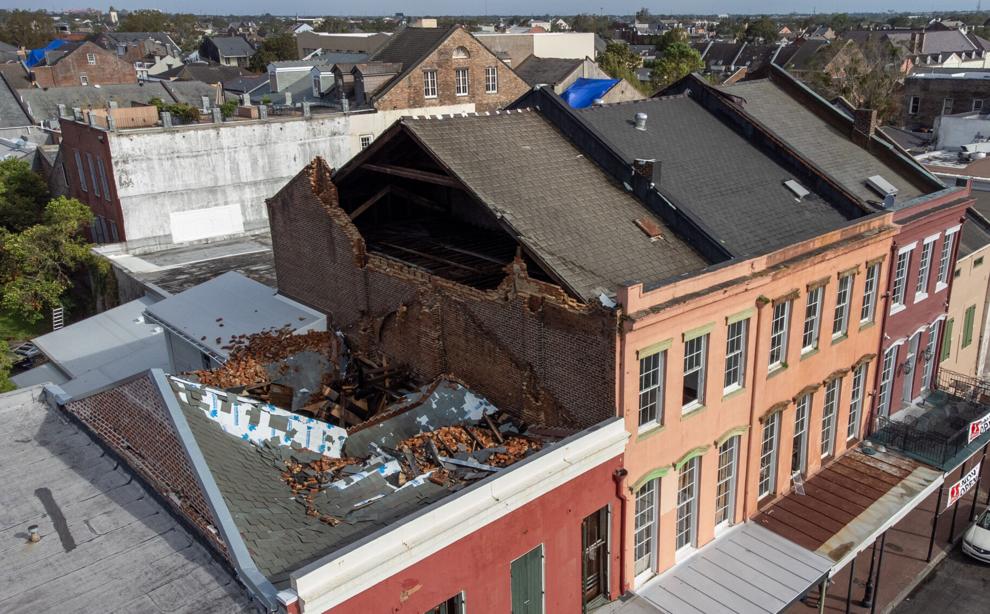
Bricks from the damaged gable end of 925 Decatur St. are scattered atop the partially collapsed roof of its French Quarter neighbor, home to Central Grocery. Photo by David Grunfeld, courtesy of The Times-Picayune | The New Orleans Advocate.
Advertisements





